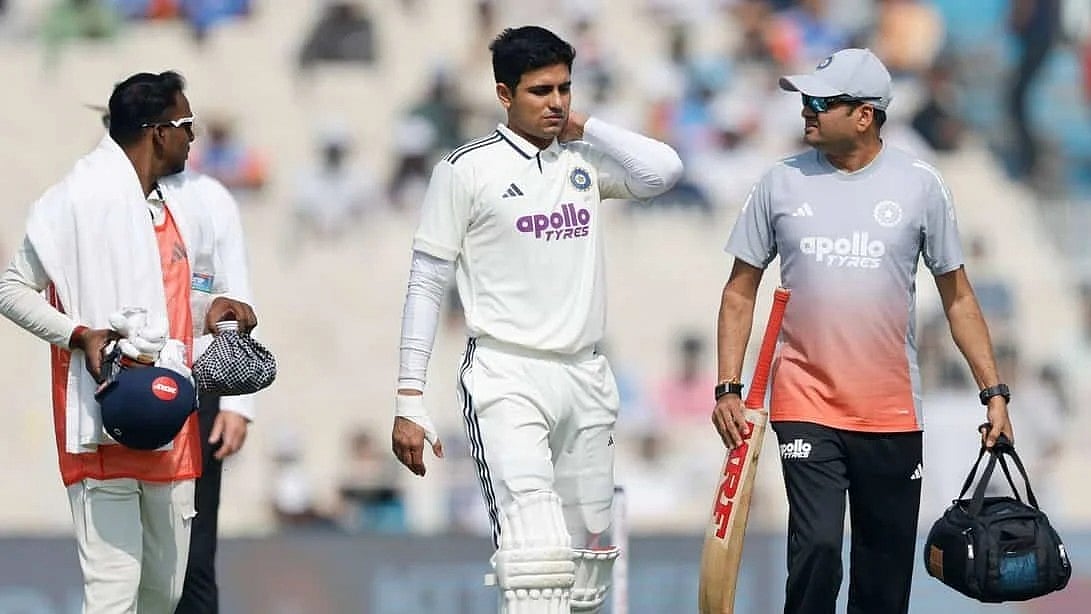Cricket
India vs SA: Wicket plays spoilsport as hosts sense victory after second day
Captain Shubman Gill’s neck spasm raises concern, talk of protecting him from all formats begin

An official count from Cricket Association of Bengal (CAB) put the Eden Gardens attendance at 41,000-plus on Saturday afternoon. However, just as the crowd was warming up for a good contest at hand – a treacherous wicket and spinners of both sides combined to ensure there would be hardly any action left on the third day on Sunday.
It’s now India’s margin of win that remains to be decided while the statisticians can work overtime to find when was the last time the Eden wicket offered such variable bounce to make survival at the crease such a major challenge. The last Test here against Bangladesh, the pink ball affair in 2019, ended in a big win for India in less than three days – but the exaggerated seam movement of the lacquered ball was deemed as the villain on that occasion.
The biggest sub-plot in the run-up to the match was about the nature of the wicket, with the curator promising that there would be something in it for the batters while spinners will start getting some purchase from the second day onwards. What transpired was a different story with cracks and an unpredictable bounce making survival difficult for batters of both teams and as many as 15 wickets fell during the day.
Published: undefined
Speaking after the day’s action, Indian bowling coach Morne Morkel admitted: ‘’Even we didn’t think that the wicket would deteriorate by the second day, but that's the beauty of playing on sub-continent wickets.’’ However, if a total of 189 by the Indian batters was below par, the Indian spinners ensured that it would not matter in the end with senior pro Ravindra Jadeja standing out with a four-wicket haul with trademark persistence.
With the Proteas buckling under pressure in the second innings and reduced to 93 for seven, a total of 26 wickets have fallen across two days off 152.2 overs. There could be questions asked as to whether there is a distinct drop in the quality of batsmanship even by Indian batters – but the South African journeyman Simon Harmer managed to keep them guessing with his drift and the ability to take the away from the left-handers.
The worrying point from India’s point of view, however, is the freakish neck spasm of skipper Shubman Gill which forced him to retire hurt after just playing three balls. He launched into a disdainful sweep against Harmer to the ropes, but was grimacing with pain by holding his neck and it became obvious that he would not be in a position to continue.
Published: undefined
Gill couldn’t come out to bat later and there could now be doubts as to whether he would be risked for the second Test in Guwahati from 22 November. ‘’It could have been from a bad night’s sleep as he (Gill) woke up with a spasm this morning. He is a fit guy and takes good care of himself,’’ said Morkel as the Indian captain was taken to the hospital after the game for a precautionary check.
His exit has, however, fuelled the talk if the 26-year-old is being flogged too much over the past year. For all the talk of workload management doing the rounds, Gill had been playing virtually non-stop since IPL across formats – be it the Anderson-Tendulkar Trophy, Asia Cup T20, the two home Tests against the West Indies, two white ball series in Australia and then a two-Test series against the Proteas with a turnaround time of less than a week. The switching over from one format to another, in the cricketer’s own words, is something which he has been trying to come to terms with.
‘’I am still trying to figure out on how to balance all three formats,’’ was a candid admission from Gill on the eve of the Test. There has to be a rethink to protect him from any possible mental and physical fatigue in view of the years ahead of him.
Published: undefined
Follow us on: Facebook, Twitter, Google News, Instagram
Join our official telegram channel (@nationalherald) and stay updated with the latest headlines
Published: undefined